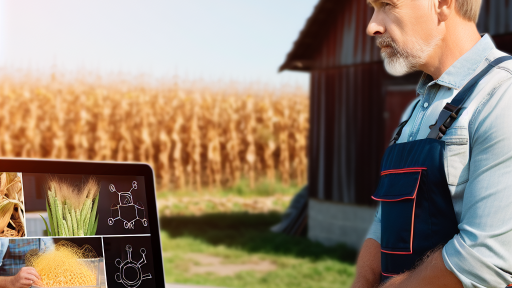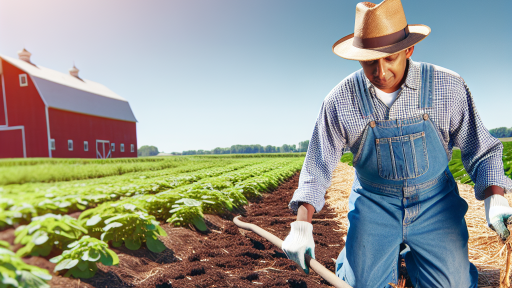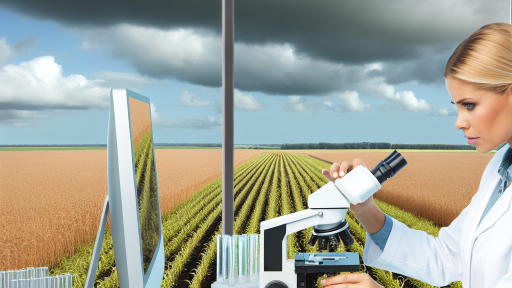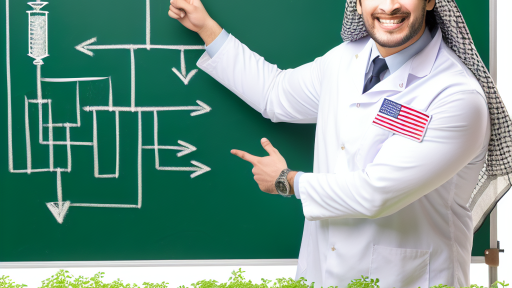Introduction to IoT in Agriculture
Defining IoT Technology
The Internet of Things (IoT) comprises interconnected devices that communicate with each other.
These devices collect and exchange data to improve decision-making processes.
In agriculture, IoT enhances efficiency and productivity in various practices.
Relevance to Modern Farming
IoT technology is revolutionizing the way farmers manage their crops.
It allows for real-time monitoring of soil, weather, and crop conditions.
Additionally, farmers can obtain insights for better resource management.
Benefits of IoT in Agriculture
First, IoT reduces operational costs by automating routine tasks.
Second, it improves yields through precise data-driven practices.
Furthermore, IoT contributes to sustainable farming by optimizing resource usage.
Examples of IoT Applications
Farmers use soil moisture sensors to determine irrigation needs.
Weather stations provide vital information for planning activities.
Moreover, drones equipped with cameras monitor crop health efficiently.
Challenges in Implementing IoT
Despite its advantages, integrating IoT faces several challenges.
One challenge is ensuring reliable connectivity in rural areas.
Moreover, farmers may require training to utilize these technologies effectively.
Transform Your Agribusiness
Unlock your farm's potential with expert advice tailored to your needs. Get actionable steps that drive real results.
Get StartedFuture Prospects of IoT in Agriculture
The future of IoT in agriculture looks promising and growth-focused.
Developers aim to create more advanced sensors and devices.
As a result, we can expect improved agricultural practices and sustainability.
Types of IoT Sensors used in Crop Analytics
Soil Moisture Sensors
Soil moisture sensors play a crucial role in crop analytics.
They help farmers understand the moisture levels in the soil.
These sensors provide real-time data for efficient irrigation.
Additionally, they help in preventing overwatering and underwatering.
As a result, farmers can optimize water usage, saving resources.
Temperature Sensors
Temperature sensors monitor the ambient conditions of the farm.
They ensure that crops are growing in optimal temperatures.
These sensors can trigger alerts when temperatures exceed safe limits.
Consequently, farmers can take necessary actions promptly.
This data assists in predicting crop performance and yield.
Humidity Sensors
Humidity sensors measure moisture levels in the air.
They provide insights into the microclimate around the crops.
This information is vital for preventing diseases in plants.
Monitoring humidity helps in planning irrigation schedules effectively.
Ultimately, these sensors contribute to healthier crop growth.
Nutrient Sensors
Nutrient sensors analyze the nutrient levels in the soil.
These sensors help in assessing whether crops receive adequate nutrients.
By identifying nutrient deficiencies, farmers can make informed decisions.
Thus, they can apply fertilizers more efficiently and accurately.
Moreover, nutrient sensors assist in improving overall crop health.
Benefits of Using IoT Sensors
Utilizing IoT sensors leads to smarter farming practices.
Showcase Your Farming Business
Publish your professional farming services profile on our blog for a one-time fee of $200 and reach a dedicated audience of farmers and agribusiness owners.
Publish Your ProfileThey enhance decision-making based on accurate data-driven insights.
Furthermore, these sensors promote sustainable agriculture through efficiency.
Farmers can reduce costs while maximizing yield and quality.
In summary, IoT sensors are vital for modern crop analytics.
Benefits of IoT Sensors in Crop Monitoring
Improving Crop Performance
IoT sensors enhance crop performance significantly.
They provide real-time data about soil health and plant conditions.
Farmers can quickly identify issues like pests or diseases.
Moreover, timely interventions boost overall crop health.
This leads to improved quality and quantity of produce.
Enhancing Resource Management
IoT sensors optimize resource usage effectively.
They monitor moisture levels and weather conditions diligently.
This information helps farmers make informed irrigation decisions.
Consequently, water consumption decreases while crop health improves.
Furthermore, sensors assist in efficient fertilizer application.
Increasing Yield
IoT technology plays a vital role in maximizing yield.
By analyzing data, farmers can adjust their practices accordingly.
This adaptability ensures crops receive the necessary nutrients.
As a result, yields increase substantially over time.
Moreover, predictive analytics from sensors can forecast harvest times better.
Enabling Precision Agriculture
Precision agriculture benefits greatly from IoT sensors.
Sensors allow for targeted treatment of crops.
This precision minimizes waste and enhances productivity.
Farmers can use resources where they matter most.
Thus, they achieve better outcomes with less effort.
Uncover the Details: Aquaponics Water Management Tips
Real-Time Data Collection and Analysis
Immediate Data Access
IoT sensors provide immediate access to vital agricultural data.
These devices capture information such as soil moisture, temperature, and humidity.
Farmers can monitor their fields remotely through real-time data feeds.
As a result, this technology reduces the time needed for decision-making.
Impact on Decision-Making
Real-time data enhances the decision-making process in agriculture.
Farmers make informed decisions based on precise, timely data.
This leads to optimized resource allocation and improved crop yields.
Furthermore, timely insights allow farmers to respond quickly to adverse conditions.
Integration with Modern Technologies
IoT sensors integrate seamlessly with other technologies like AI and machine learning.
These integrations help analyze large datasets for deeper insights.
For example, AI can predict pest outbreaks using data from connected sensors.
This proactive approach minimizes potential crop damage.
Case Study: Efficient Water Management
Oliver’s farm in California utilizes IoT sensors for efficient water management.
His sensors monitor soil moisture levels continuously.
This data enables him to optimize irrigation schedules.
Showcase Your Farming Business
Publish your professional farming services profile on our blog for a one-time fee of $200 and reach a dedicated audience of farmers and agribusiness owners.
Publish Your ProfileConsequently, he conserves water while maintaining healthy crops.
Future Prospects
The future of agriculture lies in continued advancements in IoT technology.
As sensors become more affordable, adoption rates will rise.
Farmers will increasingly rely on real-time data for crop management.
This transition will drive sustainability and increase global food productivity.
Explore Further: Cover Crops: Enhancing Biodiversity on Your Farm
Case Studies of Successful IoT Implementations
Tech Innovations at Green Valley Farms
Green Valley Farms has embraced IoT technology to enhance crop management.
They employ soil moisture sensors across their fields.
These sensors provide real-time data on soil conditions.
This information helps farmers optimize irrigation schedules.
As a result, they have reduced water usage by 30%.
Furthermore, crop yields have increased due to better water management.
Sustainable Practices at AgriTech Solutions
AgriTech Solutions integrates IoT sensors in their smart greenhouse systems.
They monitor temperature, humidity, and light levels continuously.
IoT data analysis allows for precise climate control.
This innovation reduces energy costs significantly.
Moreover, plants grow healthier in optimized conditions.
Farmers United Cooperative’s Use of Livestock Monitoring
Farmers United Cooperative utilizes IoT sensors for livestock tracking.
The sensors monitor animal health and location throughout the farm.
With this data, farmers can detect health issues promptly.
This proactive approach minimizes veterinary costs.
Additionally, it promotes better overall herd management.
Data-Driven Decision Making at EcoAgro
EcoAgro has implemented a comprehensive IoT network for crop monitoring.
Sensors provide data on plant growth and environmental conditions.
This information aids in making informed decisions about fertilizers.
As a result, EcoAgro has improved crop quality and yield.
The use of IoT analytics leads to smarter agricultural practices.
Harvest Optimization with Smart Farming Technologies
Harvey Farms utilizes drone technology paired with IoT sensors.
Drones conduct aerial surveys, providing visual crop assessments.
This data, combined with IoT sensor readings, enhances harvest planning.
Farmers can identify ripe crops and optimize harvest schedules.
This strategy increases efficiency and minimizes waste.
Uncover the Details: Advanced Tools For Pest And Disease Forecasting
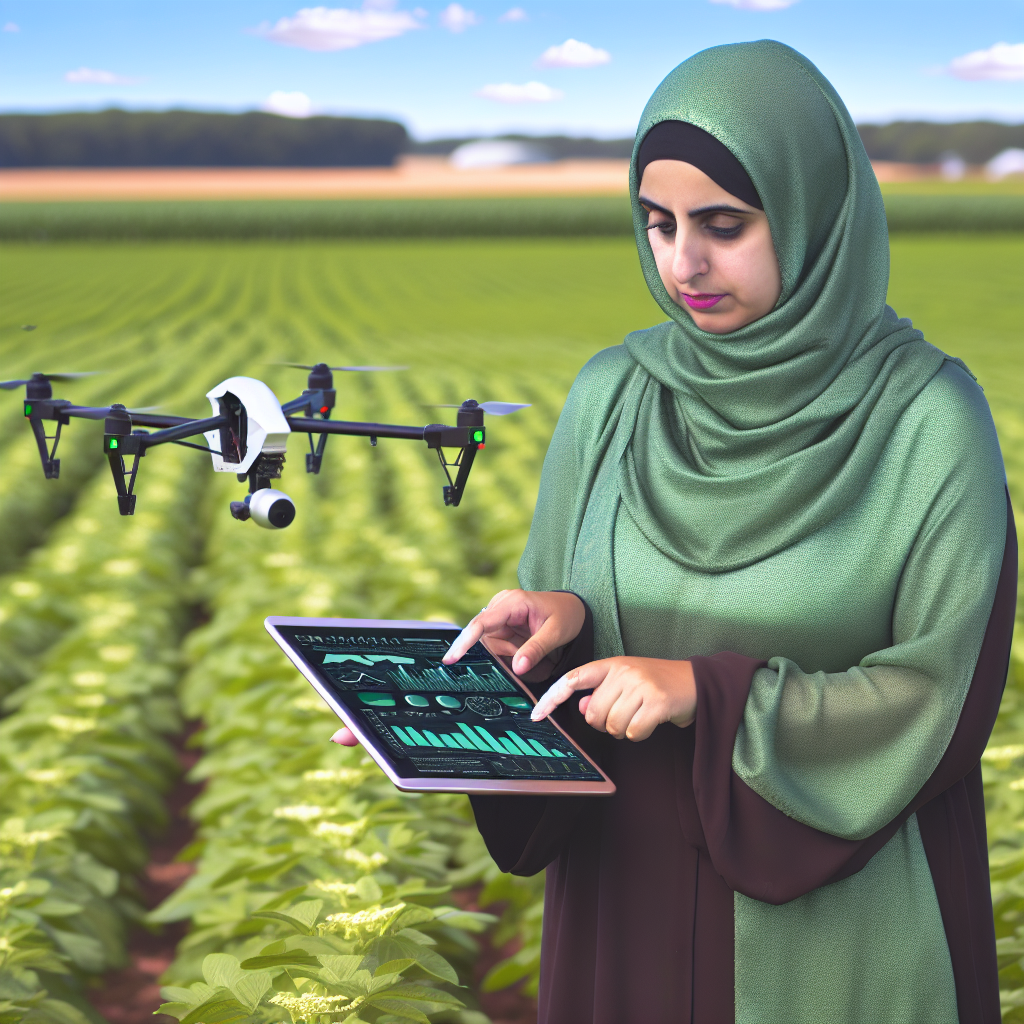
Challenges and Limitations of Implementing IoT Sensors
Cost Considerations
Implementing IoT sensors can involve significant initial costs.
The expense of high-quality sensors and their installation adds up quickly.
Agricultural producers often struggle to justify these costs.
Moreover, ongoing maintenance expenses can be a burden.
Farmers must weigh these costs against potential benefits.
Connectivity Issues
Reliable connectivity remains a challenge in rural areas.
Weak network infrastructure often hinders data transmission.
Showcase Your Farming Business
Publish your professional farming services profile on our blog for a one-time fee of $200 and reach a dedicated audience of farmers and agribusiness owners.
Publish Your ProfileFarmers may need to invest in improved connectivity solutions.
Inconsistent signals can affect sensor usability and data accuracy.
Ultimately, a robust internet connection is essential for success.
Need for Technical Knowledge
Using IoT sensors requires a certain level of technical proficiency.
Farmers may struggle with operating and maintaining these systems.
Understanding data analysis and interpretation adds another layer of complexity.
Training programs can help, but they also represent an additional investment.
Consequently, there is a steep learning curve for many producers.
See Related Content: Latest Advances In Crop Monitoring Technologies
Future Trends in IoT Agriculture
Advancements in Sensor Technology
The future of IoT agriculture relies on cutting-edge sensor technology.
These sensors gather real-time data from the fields.
As technology progresses, sensors will become smaller and more efficient.
This miniaturization allows for widespread deployment in diverse crops.
Farmers will benefit from immediate and precise information.
Integration with Artificial Intelligence
IoT devices will increasingly integrate with artificial intelligence.
AI will analyze data trends and provide actionable insights.
Farmers will make better decisions based on predictive analytics.
This collaboration enhances crop yield and optimizes resources.
Enhanced Connectivity and Data Sharing
5G technology will facilitate real-time data sharing.
Farmers can monitor conditions remotely with ease.
Integrated platforms will allow seamless communication between devices.
Shared data can lead to collaborative farming efforts.
Increased Automation in Farming Practices
The future will see more automation in agriculture.
IoT technology will drive automated systems for irrigation and harvesting.
Robotics will assist in tasks, reducing labor-intensive efforts.
This shift will lower costs and increase efficiency for farmers.
Focus on Sustainability and Environmental Benefits
Environmentally friendly practices will gain importance.
IoT will contribute to sustainable resource management.
Farmers can optimize water usage and reduce chemical applications.
This commitment to sustainability will enhance crop health and biodiversity.
Personalized Agriculture Solutions
Farmers will receive customized solutions based on specific needs.
IoT data will help tailor strategies for individual fields.
Such personalization improves crop health and farm profitability.
Furthermore, it addresses unique challenges faced by farmers.
Embracing IoT Technology in Farming
Importance of IoT in Agriculture
IoT technology significantly enhances farming practices.
It allows for real-time monitoring of crops.
This capability leads to improved decision-making.
Promoting Sustainable Practices
Sustainable farming is vital for our planet’s future.
With IoT, farmers can optimize resource use.
This approach reduces waste and protects natural ecosystems.
Showcase Your Farming Business
Publish your professional farming services profile on our blog for a one-time fee of $200 and reach a dedicated audience of farmers and agribusiness owners.
Publish Your ProfileConsequently, it fosters healthier soil and biodiversity.
Boosting Food Production
IoT technology directly impacts food security.
It helps increase yield through precise data collection.
Furthermore, timely insights lead to better pest control.
Farmers can respond swiftly to environmental changes.
Collaboration and Knowledge Sharing
Embracing IoT encourages collaboration among farmers.
Sharing data leads to enhanced agricultural strategies.
This collective knowledge improves crop management practices.
Future Prospects of IoT in Farming
The future of agriculture lies in technological integration.
As IoT devices become more accessible, adoption will grow.
Farmers must stay informed about emerging technologies.
Adopting these technologies ensures productive farming.
Embracing IoT technology is crucial.
It promotes sustainable farming practices effectively.
Moreover, it enhances food production for a growing population.
Thus, investing in this technology is essential for future resilience.
Additional Resources
How IoT in Agriculture is Transforming the Farming Landscape
Agriculture’s technology future: How connectivity can yield new growth

